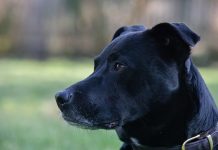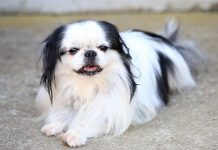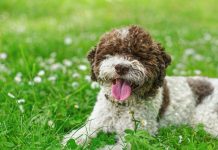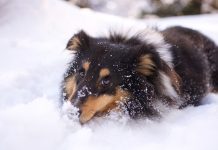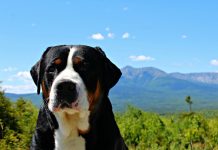History and Origins of the Shiba Inu Breed

The Shiba Inu is a breed of Japanese origin that is one of the oldest and smallest native breeds in Japan. Here’s a detailed look at the history, physical characteristics, and appearance of Shiba Inus:
History and Origins
- Ancient Origins: The Shiba Inu is believed to have ancient origins, possibly dating back to 300 B.C. It is thought to be descended from ancient breeds that accompanied early settlers to Japan.
- Purpose: Originally, Shiba Inus were bred for hunting small game in Japan’s mountainous regions, including wild boar, birds, and small mammals. They are highly agile and were valued for their hunting prowess and versatility.
- Near Extinction: The breed’s numbers declined significantly during World War II due to food shortages and the ravages of war. By the end of the war, only a few Shiba Inus remained, leading to careful breeding efforts to preserve the breed.
- Recovery and Popularity: After the war, dedicated breed enthusiasts worked to restore the Shiba Inu population. The breed gradually regained popularity in Japan and eventually gained recognition internationally.
Physical Characteristics and Appearance
- Size: Shiba Inus are small to medium-sized dogs, with adult males typically standing between 14.5 to 16.5 inches (37 to 42 cm) at the shoulder, and females slightly smaller.
- Build: They have a compact and well-muscled build, with a proportionate appearance and balanced structure. Despite their small size, they are sturdy and agile.
- Coat: Shiba Inus have a double coat that is dense, straight, and stiff. The outer coat is straight and harsh, while the undercoat is soft and dense. They have a characteristic “urajiro” pattern, with cream to white markings on the cheeks, sides of the muzzle, throat, chest, belly, and underside of the tail.
- Color: The most common coat color in Shiba Inus is red, but they can also be sesame (red with black-tipped hairs), black and tan, or cream. The urajiro markings are a defining feature of the breed.
- Tail: One of the distinctive features of Shiba Inus is their curled or sickle-shaped tail, which is carried high over the back.
- Expression: Shiba Inus have a fox-like expression with triangular-shaped eyes that are dark and deep-set. Their ears are erect and slightly rounded at the tips.
- Overall Appearance: Shiba Inus are known for their confident and spirited demeanor. They have a proud bearing and alert expression, with an unmistakable aura of intelligence and independence.
The Shiba Inu is a fascinating breed with a rich history and distinctive appearance. They are intelligent, independent, and spirited dogs that make loyal companions. Today, Shiba Inus are popular both in Japan and around the world, cherished for their unique personality and striking appearance.
Shiba Inu Temperament and Personality Traits
Shiba Inus are known for their spirited and unique temperament. They are intelligent, independent, and often exhibit a bold and confident personality. Understanding their temperament and training needs is essential for successfully raising and living with a Shiba Inu.
Temperament and Personality Traits
- Independent: Shiba Inus have a strong sense of independence and self-reliance. They are not overly clingy or needy dogs and may prefer some alone time.
- Alert and Vigilant: Shiba Inus are naturally alert and vigilant. They make excellent watchdogs and will alert their owners to any potential threats or changes in their environment.
- Curious and Inquisitive: These dogs are curious by nature and enjoy exploring their surroundings. They have a keen sense of curiosity and can be quite playful.
- Confident: Shiba Inus have a confident demeanor and are not easily intimidated. They carry themselves with pride and are not typically shy or timid.
- Reserved with Strangers: While Shiba Inus are loyal and affectionate with their families, they can be reserved or aloof with strangers. Proper socialization from a young age is important to help them feel more comfortable around new people.
- Strong-Willed: Shiba Inus are known for their strong-willed nature. They may be stubborn at times and require consistent training and positive reinforcement techniques.
- Clean and Cat-Like: Shiba Inus are known for their fastidious nature. They are often described as being cat-like in their grooming habits and may groom themselves frequently.
- Good with Families: Shiba Inus can make great family pets when raised with proper socialization and training. They are generally good with children, but supervision is recommended, especially with younger children who may not understand a Shiba’s boundaries.
Training and Socialization Needs
- Early Socialization: Start socializing your Shiba Inu puppy early to expose them to various people, animals, and environments. This helps prevent shyness or fearfulness as they grow older.
- Positive Reinforcement: Use positive reinforcement techniques, such as treats, praise, and rewards, to motivate and encourage your Shiba during training sessions. Harsh or forceful methods can lead to resistance.
- Consistency and Patience: Shiba Inus respond best to consistent training and patient handling. They may be independent thinkers, so it’s important to be patient and persistent.
- Basic Obedience: Focus on teaching basic obedience commands like sit, stay, come, and leash manners. Shiba Inus are intelligent dogs and can learn quickly with the right approach.
- Exercise and Mental Stimulation: Provide regular exercise and mental stimulation to keep your Shiba Inu physically and mentally engaged. Interactive toys, puzzle games, and daily walks are beneficial.
- Secure Enclosures: Due to their strong prey drive and independent nature, Shiba Inus should always be kept in a secure, fenced area to prevent them from wandering off.
- Continuous Training: Training should be ongoing throughout your Shiba Inu’s life to reinforce good behavior and maintain a strong bond between you and your dog.
By understanding and meeting the training and socialization needs of a Shiba Inu, you can help shape a well-adjusted, confident, and happy companion. Consistent training, positive reinforcement, and early socialization are key to bringing out the best in this unique and spirited breed.
Health Considerations and Common Issues in Shiba Inus
Shiba Inus are generally healthy and hardy dogs, but like all breeds, they are prone to certain health issues. Understanding these health considerations and providing a suitable environment and lifestyle for your Shiba Inu can contribute to a long and happy life together.
Health Considerations and Common Issues
- Hip Dysplasia: Shiba Inus can be susceptible to hip dysplasia, a genetic condition where the hip joint doesn’t develop properly, leading to arthritis and mobility issues.
- Patellar Luxation: This is a condition where the kneecap dislocates from its normal position, causing pain and lameness.
- Progressive Retinal Atrophy (PRA): PRA is a degenerative eye disease that can lead to blindness. Responsible breeders should conduct eye screenings to reduce the risk of passing on this condition.
- Allergies: Some Shiba Inus may suffer from allergies, including food allergies or skin allergies triggered by environmental factors like pollen or dust.
- Dental Issues: Shiba Inus can be prone to dental problems like gum disease and tooth decay. Regular dental care, including brushing your dog’s teeth, can help prevent dental issues.
- Hypothyroidism: This is a common endocrine disorder in dogs that affects the thyroid gland, leading to symptoms such as weight gain, lethargy, and skin problems.
- Hemorrhagic Gastroenteritis (HGE): This is a serious condition characterized by sudden onset vomiting, diarrhea, and dehydration. It requires immediate veterinary attention.
- Obesity: Shiba Inus have a tendency to gain weight if overfed or not given enough exercise. Monitor your Shiba’s diet and provide regular exercise to prevent obesity.
Living with a Shiba Inu: Suitable Environments and Lifestyle Considerations

- Regular Exercise: Shiba Inus are active dogs that require regular exercise to stay healthy and mentally stimulated. Daily walks, play sessions, and interactive toys are important for their well-being.
- Secure Fencing: Due to their independent nature and hunting instincts, Shiba Inus should be kept in a securely fenced yard to prevent them from wandering off.
- Grooming: Shiba Inus have a dense double coat that sheds heavily twice a year. Regular brushing helps reduce shedding and keeps their coat in good condition.
- Training and Socialization: Early training and socialization are crucial for Shiba Inus to help them develop into well-adjusted adult dogs. Positive reinforcement methods work best with this breed.
- Stimulation and Enrichment: Shiba Inus thrive on mental stimulation and enrichment activities. Provide puzzle toys, obedience training, and agility exercises to keep them engaged.
- Temperature Considerations: Shiba Inus can tolerate cold weather better than heat due to their double coat. Avoid exposing them to extreme heat, and provide shade and water during hot weather.
- Routine Veterinary Care: Regular veterinary check-ups, vaccinations, and preventive care are essential to monitor your Shiba Inu’s health and catch any issues early.
By addressing the specific health considerations of Shiba Inus and providing a suitable environment and lifestyle, you can ensure that your Shiba enjoys a happy, healthy, and fulfilling life as part of your family. Regular veterinary care, proper nutrition, exercise, and mental stimulation are key to maintaining their well-being and longevity.
Shiba Inu Variations and Breeding Practices
Shiba Inus are a distinct breed with specific breed standards, but variations can occur within the breed based on factors such as coat color, size, and conformation. Responsible breeding practices aim to maintain the breed’s desirable traits while minimizing health issues and genetic problems. Here’s an overview of Shiba Inu variations and breeding practices:
Variations in Shiba Inus
- Coat Colors: Shiba Inus are recognized for their coat colors, including red, sesame (red with black-tipped hairs), black and tan, and cream. Red is the most common and recognized color in Shiba Inus.
- Size: The Shiba Inu breed standard specifies a range of sizes, with adult males typically standing between 14.5 to 16.5 inches (37 to 42 cm) at the shoulder, and females slightly smaller. Variations in size can occur within this range.
- Conformation: Shiba Inus should have a well-balanced and proportionate build with distinct breed characteristics, including a fox-like face, erect ears, and a curled tail carried over the back.
Breeding Practices
- Health Testing: Responsible breeders conduct health screenings to identify potential genetic issues before breeding. This may include testing for hip dysplasia, patellar luxation, progressive retinal atrophy (PRA), and other hereditary conditions.
- Breed Standard: Ethical breeders adhere to the Shiba Inu breed standard set by kennel clubs and breed organizations. This standard outlines the ideal appearance, size, temperament, and structure of the breed.
- Selective Breeding: Breeders carefully select breeding pairs based on health, temperament, and conformation to produce healthy and well-rounded puppies that meet the breed standard.
- Avoiding Inbreeding: Responsible breeders avoid excessive inbreeding to minimize the risk of genetic disorders and maintain genetic diversity within the breed.
- Socialization and Early Handling: Puppies from reputable breeders are often well-socialized and exposed to various stimuli from an early age, setting a good foundation for their development.
- Ethical Practices: Good breeders prioritize the health and well-being of the dogs over profit, ensuring that puppies are raised in a loving environment with proper care and attention.
- Breeder Reputation: It’s important to research and choose a reputable breeder with a good track record of producing healthy, well-adjusted Shiba Inus. Avoid puppy mills and backyard breeders who prioritize quantity over quality.
Shiba Inus are a unique and beloved breed with specific characteristics and variations. Responsible breeding practices focus on maintaining the breed’s health, temperament, and conformation while adhering to ethical standards. When acquiring a Shiba Inu, it’s important to work with a reputable breeder who prioritizes the well-being of their dogs and produces puppies that exemplify the best qualities of the breed.
50 Best Names with Meanings for Shiba Inu
Choosing the perfect name for your Shiba Inu can be an exciting and meaningful process. Here are 50 great names with meanings that might suit your Shiba Inu:
- Kai – means “ocean” in Japanese
- Mika – means “beautiful fragrance” in Japanese
- Kumo – means “cloud” in Japanese
- Yuki – means “snow” in Japanese
- Sora – means “sky” in Japanese
- Hana – means “flower” in Japanese
- Katsu – means “victory” in Japanese
- Hoshi – means “star” in Japanese
- Mochi – a sweet rice cake in Japanese cuisine
- Nori – means “seaweed” in Japanese
- Kiko – means “chronicle” in Japanese
- Haru – means “spring” in Japanese
- Taro – a common Japanese name meaning “big boy”
- Momo – means “peach” in Japanese
- Nana – means “seven” in Japanese
- Riku – means “land” or “shore” in Japanese
- Ren – means “water lily” in Japanese
- Yoshi – means “lucky” or “good” in Japanese
- Sakura – means “cherry blossom” in Japanese
- Kona – means “lady” in Hawaiian
- Kenji – means “intelligent second son” in Japanese
- Aiko – means “beloved child” in Japanese
- Sumo – inspired by the Japanese sport of sumo wrestling
- Miko – means “shrine maiden” in Japanese
- Hiro – means “generous” or “prosperous” in Japanese
- Yumi – means “beautiful” in Japanese
- Suki – means “beloved” in Japanese
- Haruki – means “spring child” in Japanese
- Kuma – means “bear” in Japanese
- Rin – means “dignified” or “cold” in Japanese
- Toshi – means “wise” or “year” in Japanese
- Kiko – means “chronicle” in Japanese
- Yoshiko – means “child of goodness” in Japanese
- Taro – means “big boy” in Japanese
- Momo – means “peach” in Japanese
- Chibi – means “small” or “short” in Japanese
- Yasu – means “peace” in Japanese
- Nori – means “seaweed” in Japanese
- Aki – means “autumn” in Japanese
- Niko – means “cat” in Japanese
- Mika – means “beautiful fragrance” in Japanese
- Yori – means “trustworthy” in Japanese
- Suki – means “beloved” in Japanese
- Hoshi – means “star” in Japanese
- Sora – means “sky” in Japanese
- Mochi – a type of Japanese rice cake
- Kuma – means “bear” in Japanese
- Nami – means “wave” in Japanese
- Riku – means “land” or “shore” in Japanese
- Hikari – means “light” in Japanese
Choose a name that resonates with you and reflects your Shiba Inu’s personality and characteristics. Whether you prefer traditional Japanese names or unique meanings, there’s a perfect name out there for your beloved Shiba Inu companion.

In conclusion, this comprehensive guide has provided a detailed overview of Shiba Inu dogs, highlighting their unique characteristics and essential care considerations. Throughout our exploration, we’ve delved into the history, distinctive traits, and important aspects of owning a Shiba Inu.
Shiba Inus are known for their spirited personality, intelligence, and strong-willed nature. They are loyal and independent dogs that require consistent training and socialization from a young age. As you embark on your journey with a Shiba Inu, it’s important to understand and appreciate their unique qualities and needs.
With proper training, exercise, and mental stimulation, Shiba Inus can make wonderful companions for experienced dog owners. Remember to provide them with regular physical activity, mental challenges, and positive reinforcement to ensure their well-being and happiness.
By understanding the breed’s characteristics and meeting their needs, you can develop a strong bond and enjoy a fulfilling companionship with your Shiba Inu for years to come.






